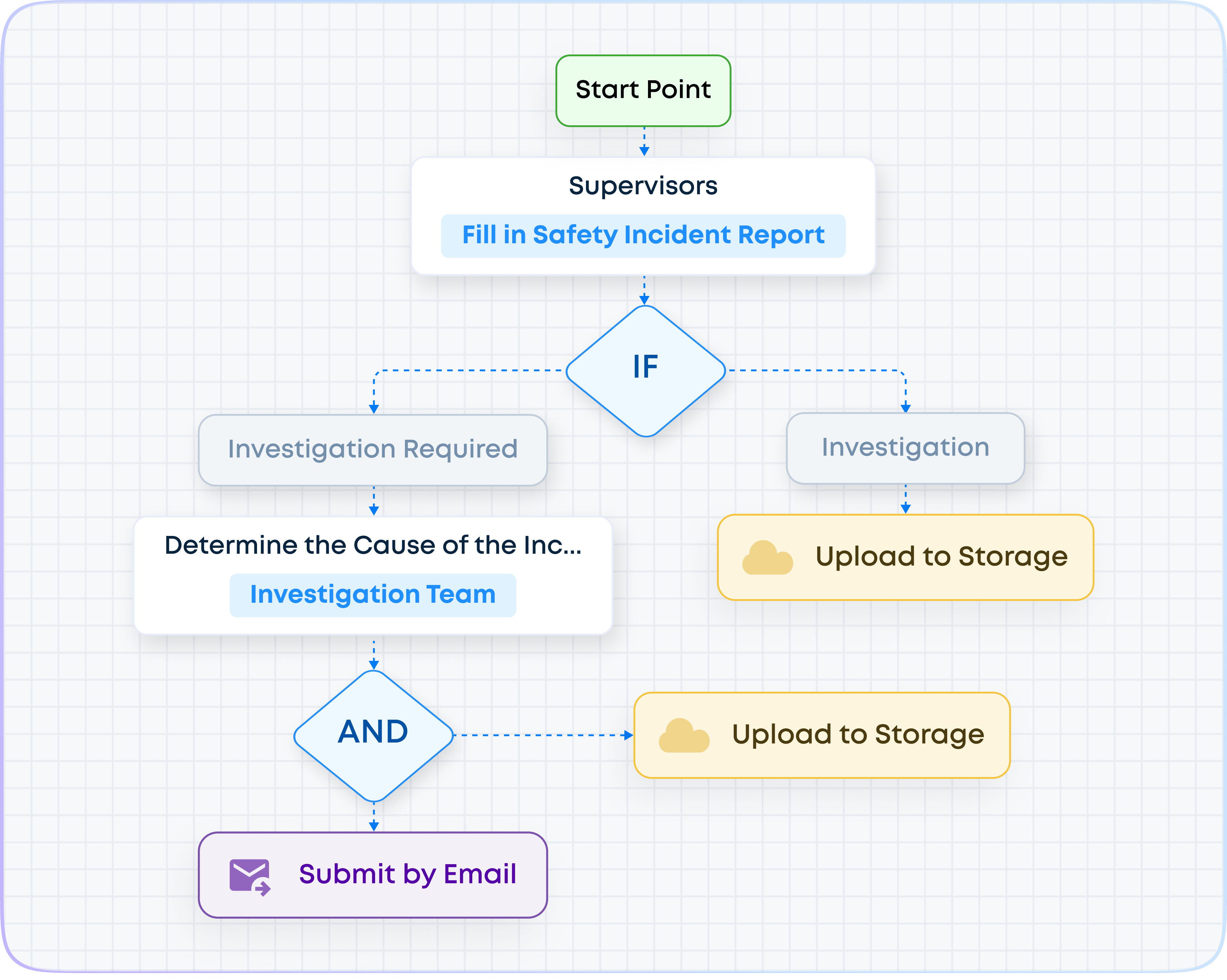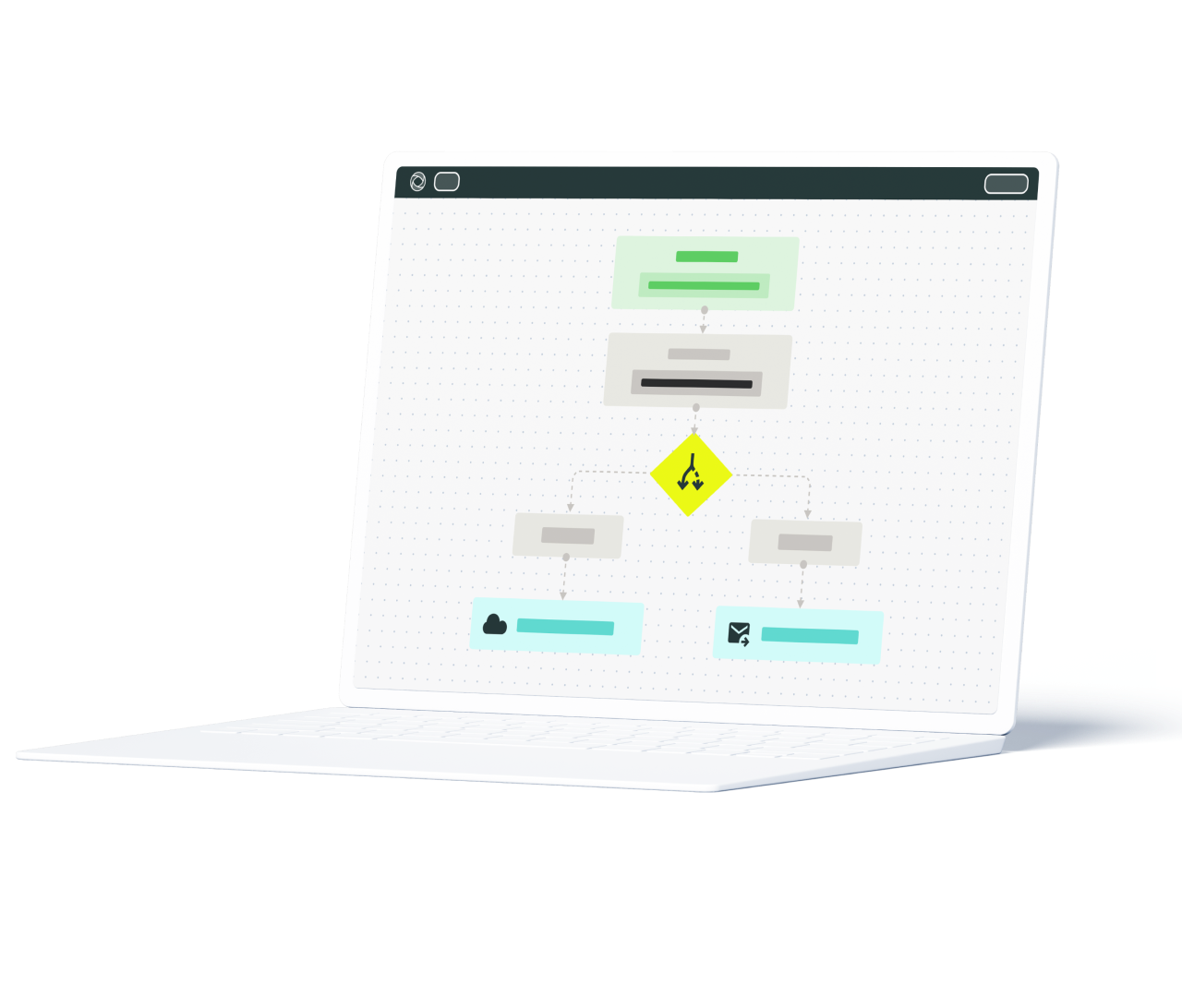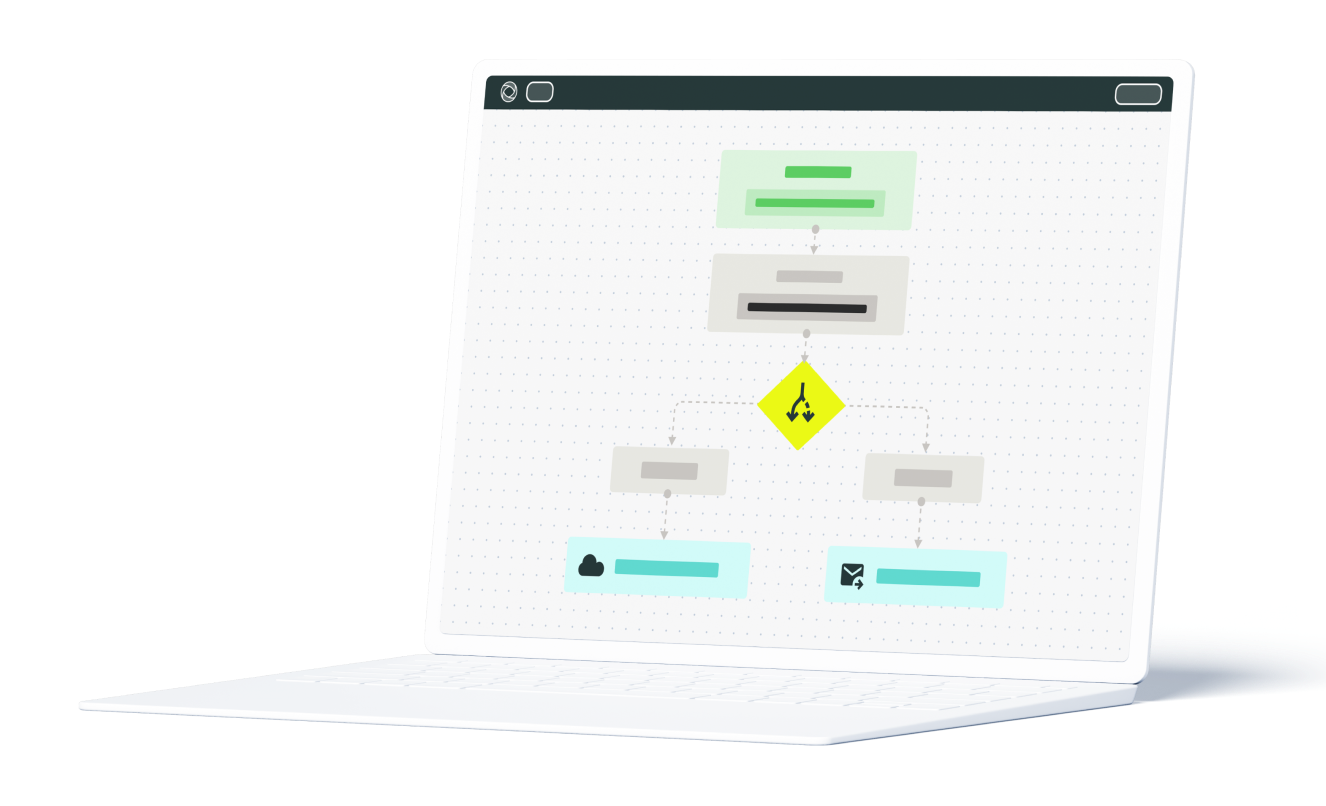What Is the Incident Investigation Process?
The incident investigation process is a structured way for employers to document and analyze workplace mishaps that lead to injuries or property damage.
The process starts when an employee reports the incident to management. From there, the focus shifts to uncovering what went wrong, why it happened, and how to prevent it from happening again.
The incident investigation procedure is a team effort. Workers, witnesses, and managers all work together to pierce together what happened and create stronger practices moving forward. By working through this process, everyone contributes to improve workplace safety.
The Basic Steps in the Incident Investigation Process
A good investigation follows clear steps that are easy to understand and put into action. Each one builds on the last to ensure nothing is missed and action has been taken. Here’s a look at 6 incident investigation steps:
1. Take Immediate Action
Act quickly. When an incident happens, secure the scene to keep everyone safe and preserve evidence. Notify the right people and start gathering anything that might disappear, like video footage or physical samples. Early action can make all the difference in understanding what went wrong.
2. Organize the Investigation
A successful investigation needs good planning. Decide who needs to be involved, how much time it might take, and what resources you’ll need. Questions like “How complicated is this incident?” or “What tools will make this easier?” can guide the process. The goal is to be prepared and avoid any unexpected hiccups along the way.
3. Gather Data
Collect as much information as you can about what happened. Record the details, interview witnesses, and gather evidence like maintenance records, photos, and CCTV footage.
Ask open-ended questions during witness interviews to get detailed responses. Yes-or-no answers won’t give you enough insight.
Once you’ve got everything, organize the data from all your sources. This will make it much easier to analyze and create a clear report later.
4. Analyze the Data
Incidents are rarely random: they’re often part of a larger chain of events. To get the full picture, it’s important to look beyond the surface and identify contributing factors like workplace conditions or process gaps.
Take this example: A worker’s hand gets caught in a machine. It might seem like an unlucky accident at first. But a closer look reveals that maintenance checks weren’t thorough, and production pressures led to shortcuts around safety rules.
By uncovering these details, you can address the root causes — an integral step in building a safety culture focused on prevention.
5. Take Corrective Action
Once you know what went wrong, it’s time to make sure it doesn’t happen again. For example, if faulty equipment caused the problem, stop using it right away and get it fixed or replaced.
You’ll want to address both the immediate issue and any deeper issues that caused it. Focus on finding solutions that are effective, realistic, and easy for your team to put into practice.
6. Write the Incident Report Correctly
Finish up by putting everything into an incident report.
Start your report with the basics:
- When and where the incident occurred
- The events leading up to the incident
- What incident occurred
- Who was involved, including their job titles
- The names of witnesses and their contact details
Make sure you lay out the events in chronological order so it’s easy to follow what happened. Be clear and honest about the cause, and include all relevant details.
You can grab a free incident report template here to help you get started.
Simplify Your Incident Investigation Process with Fluix: Start Automating Today
Incident Investigation Flowchart Example
A good investigation doesn’t leave anything to chance. It starts with a clear flow and a logical approach to piece everything together. Here’s how the process works:
- Identify and categorize the incident
- Decide if an investigation is necessary
- Put together a team that’s prepared and equipped to carry out the investigation
- Collect all the facts to figure out exactly what happened.
- Look at the immediate causes and dig deeper to find any underlying issues that contributed to the incident.
- Take corrective actions to fix the problem and prevent it from happening again
- Write an incident report that explains what happened, how it was investigated, and the steps you’re taking to fix it.
- Follow up later to make sure the corrective actions are working and similar incidents haven’t occurred.


To cover aspects of the incident investigation process, we recommend using these checklists:
Benefits of Building a Solid Incident Investigation Process
Your incident investigation process sets the tone for workplace safety. It helps you find and fix risks, comply with safety standards, and build trust with your team. Here’s why it’s worth getting it right:
- Protect Lives: Investigations uncover hidden risks and hazards so you can fix them before they cause harm. Keeping your team safe is one of the most important things you can do as an employer.
- Comply with Regulations and Standards: OSHA requires businesses to investigate workplace incidents and maintain proper documentation. A strong process helps you stay compliant while reducing risks.
- Boost Employee Morale: Nobody wants to work in an unsafe environment. When employees know their health and well-being matter, they feel valued and supported. That trust leads to better engagement and commitment.
- Enhance Productivity: A safe work environment allows employees to focus on their jobs instead of worrying about potential dangers. When people feel safe, they get more done.
- Track Safety Metrics: Good investigations contribute to essential safety data, like incident rates and injury severity. Tracking these safety metrics gives you a clear picture of how your safety measures are working and where you can make improvements.
How to Optimize the Incident Investigation Procedure
Great incident investigations start with great records. Your safety documents should tell a clear story, leave no question unanswered, and be simple for anyone to follow. But when incidents catch you off guard, that’s often easier said than done.
That’s where templates come in. They help you quickly and consistently capture all the important details. And with a digital system, you can go even further with conditional logic (forms that adapt based on the answers provided).
Of course, thorough forms are only part of the process. The person leading the investigation also needs the right skills to manage each step smoothly.
That’s why it’s so important to train investigators — teaching them how to interview witnesses, secure the scene, and collect evidence the right way. A little training goes a long way in making investigations more accurate and reliable.
But even with skilled investigators and detailed records, the job isn’t done. Improving your process takes ongoing effort. After each investigation, check in with your team. Did they feel it was fair and impartial? Were there any obstacles?
You should pay attention to key metrics too, like how long investigations take, how often issues recur, and whether corrective actions are actually completed. For a bigger picture, compare your data to industry benchmarks. You might confirm you’re on the right track or discover areas where you can improve even more.
Incident documentation software brings all these moving parts together. It streamlines the investigation process, helping your team collect, organize, and act on critical information more effectively.
With this software, your team can use mobile devices to gather data on-site, take photos, and submit findings instantly. Built-in training resources and accessible guides ensure investigators can quickly reference best practices while on the job. Plus, with all your records stored in one place, it’s quick and painless to retrieve them for audits or performance reviews.
Managing the Incident Investigation Process with Fluix
The incident investigation process doesn’t have to be complicated to be effective. Digital tools like Fluix help to pull your investigations together—data, reports, and actions – in a way that works for you.
Fluix is scalable software packed with powerful features:
- Mobile data collection
- Customizable templates with conditional logic
- Automated safety workflows
- Task assignment and progress tracking
- Exportable reports
- Integrations with Power BI, Tableau, and other tools you already use
With Fluix, you’re not just getting software. You’re gaining a smarter and more efficient way to manage safety and streamline your processes.

